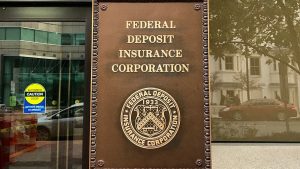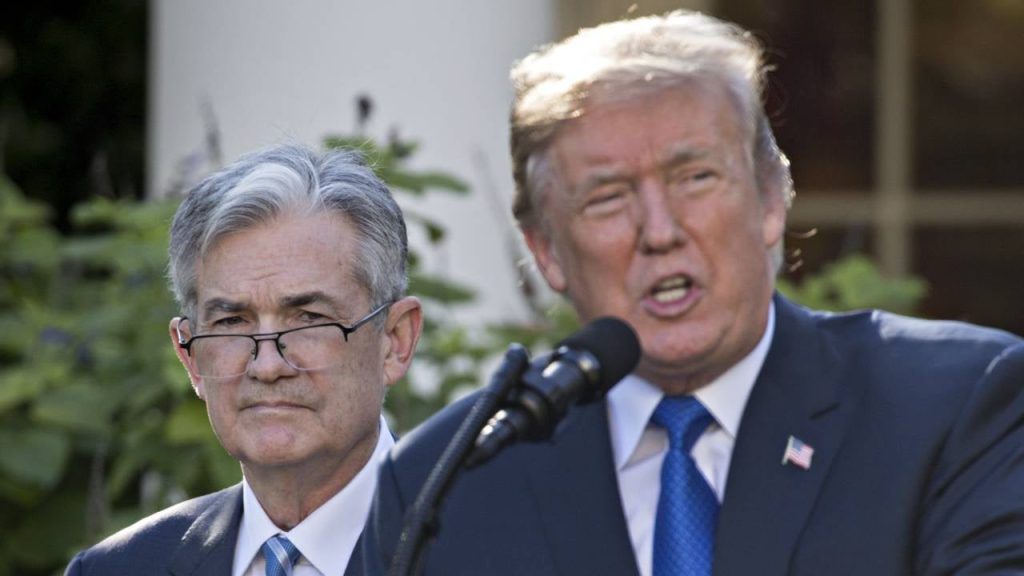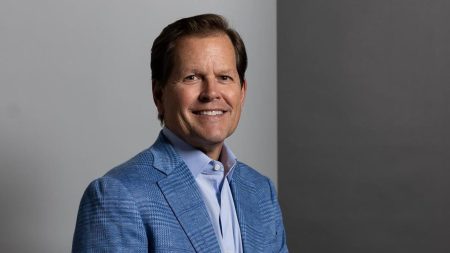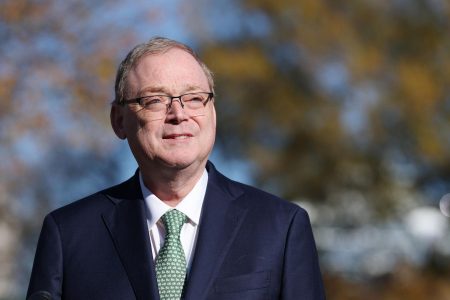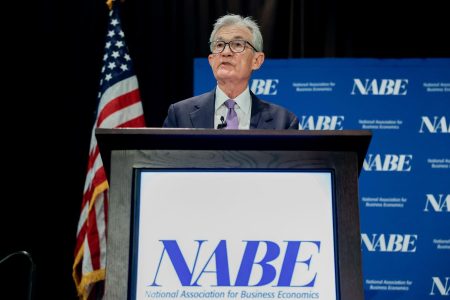The hottest ringside seat these days may not be by the boxing mat but rather in Washington, D.C., as President Donald Trump slugs it out against Federal Reserve Chair Jerome Powell. The potential loser: America’s investors and indeed anyone who wants lower interest rates.
The core issue: Trump wants lower rates now, but Powell and the Federal Open Market Committee, which determines the central bank’s policy on short-term rates, say the future path of inflation remains too uncertain. This Fed posture has sent Trump into a rage, and over the last few months he’s stated in no uncertain terms that he wants Powell fired, calling him a “major loser” and a “numbskull.”
It might all be popcorn-worthy political theater, if trillions of dollars weren’t on the line. Trump is seeking to compromise the Fed’s independence, and if he’s successful, say experts, it could set off a wave of economic consequences, including the opposite of what Trump wants: much higher interest rates. Investors are already placing their bets on the outcome, with yields on long-term Treasury bonds rising in recent weeks, as they expect a rocky road ahead for the U.S.
Trump’s agenda faces off against Fed’s inflation fighters
At the heart of the conflict are Trump’s own policies, all of which are set to turbocharge inflation.
On the one hand, Trump has stepped on the inflation gas pedal by introducing a series of global tariffs, and the inflationary effects are only beginning to come through in the monthly price data, which moved up to an annual rate of 2.7 percent in June. He’s also rammed through Congress a new budget that is expected to increase America’s deficit spending by trillions, stepping even harder on the accelerator.
On the other hand, Trump is demanding that the Fed cut interest rates, a move that would also stoke inflation, jamming the already-floored gas pedal through the floor. Trump’s call for lower rates is not just the modest “stair step” move that the Fed typically takes over an economic cycle. Instead, the president is advocating for an immediate 3 percent drop in rates in a single go.
While investors had expected the Fed to lower interest rates several times this year in response to cooling inflation, it has stood pat thus far. Instead, the Fed has been carefully watching the effects of tariffs, which economists generally expect to create significant inflation. Because companies purchase inventory months before they sell it, and they rushed to lock in prices before tariffs took effect, actual inflation is lagging the beginning of the tariffs by months. But inflation has begun to tick up, albeit slightly, and more is expected in coming months.
“It’s confounding to me (and many others) that Trump was elected on economic issues, with the primary economic concern being inflation, and yet he seems to be doing the exact opposite of what’s required to reduce the threat of inflation,” says Michael K. Farr, president and CEO, Farr, Miller & Washington, a wealth manager in Washington, D.C.
“The president’s unfounded call for a crisis-like sharp reduction in benchmark interest rates stands in stark contrast to the Fed’s dual mandate, to strive for stable prices and maximum employment, at a time when inflation and price levels remain elevated,” says Mark Hamrick, Bankrate’s senior economic analyst.
In the face of Trump’s calls for lower rates, Powell and company have stuck to their mandate — setting monetary policy to keep inflation at a manageable level while maintaining employment. In meeting after meeting, Powell has stressed that the Fed will remain “data dependent” — that is, it will let the expected path of inflation dictate whether the central bank lowers interest rates.
So Trump is asking for two things — highly inflationary fiscal and trade policy, as well as inflationary monetary policy — and he can’t have both as long as the Fed remains independent.
Why does Trump so desperately want lower interest rates? Lower rates allow the government to more cheaply refinance existing debt and issue new debt, the latter of which is coming fast and furious with the new Trump budget. The government’s financing is stretched to the limit already, and it’s paying more than $1.1 trillion annually in interest expenses as it is. The Department of Treasury would like to issue short-term bills at lower cost rather than issue higher-rate debt.
A captive Fed could lead to higher inflation
Investors are rightly worried that if the Fed loses control of the reins on interest rates, inflation — propelled by Trump’s increased deficit spending and global tariffs — could increase markedly.
“The resulting loss of confidence in the Federal Reserve’s independence and objectivity will likely result in a weaker dollar, plus higher borrowing costs for consumers, corporations and the government,” says Dave Waters, investment manager at Alluvial Capital. “It may also result in more persistent inflation and deeper recessions as investors lose faith in the ability of the Federal Reserve to respond to changing economic conditions.”
If short-term rates are lowered and stoke even more inflation, investors may expect longer-term inflation to pick up as well, and demand a higher yield on long-term Treasurys for the higher risk of inflation. But even investors in normally safe short-term Treasurys could be stung if interest rates are below the current rate of inflation, meaning they lose purchasing power on savings.
Some well-known investors have already begun placing bets against longer-term Treasurys, expecting their prices to fall and their yields to climb, perhaps precipitously. Billionaire Stan Druckenmiller, for example, has stated that he’s holding a wager against Treasurys, and in recent times, the position comprised 25 percent of his portfolio’s total net assets.
That bearishness has been reflected in 10-year and 30-year Treasurys, where yields have risen in recent weeks. The 30-year yield has eclipsed the 5 percent threshold, which it has touched a few times in the last five years but otherwise not regularly since the mid-2000s. Meanwhile, the yield on the 10-year, now around 4.5 percent, has been establishing a base since March. The 10-year yield, which forms the price basis for mortgage rates, is not helping the flailing housing market.
Given the potential upheaval in financial markets if Trump manages to oust the Fed chair, a range of prominent individuals have publicly called on Trump to stop the attacks.
JPMorgan Chase CEO Jamie Dimon has called on the Fed to remain independent, noting the effects of a controlled Fed: ”Playing around with the Fed can often have adverse consequences.” He warned that it could create “the absolute opposite of what [they] may be hoping for.”
The heads of other big banks echoed that sentiment, including Goldman Sachs CEO David Solomon, Bank of America chief Brian Moynihan and Citigroup CEO Jane Fraser.
Some Senate Republicans on the Banking, Housing, and Urban Affairs Committee also expressed support for an independent Federal Reserve, including North Carolina’s Thom Tillis.
“If anybody thinks it would be a good idea for the Fed to become another agency in the government subject to the president, they’re making a huge mistake,” said Tillis.
How investors can protect themselves from a possible Fed shake-up
Investors are rightly concerned about what could happen to interest rates and inflation if the Fed’s monetary policy is subject to politicians’ concerns. But how can investors protect themselves against what may devolve into a dire scenario?
First, investors should not panic. While the situation may worsen, it’s been the investor class that has pulled some of Trump’s questionable policies, such as massive global tariffs, back from the absolute worst of their excesses. Cold comfort, but it does suggest there’s some limit to the pain.
Investors who too quickly discard their long-term investment plan may ultimately discover that they would have been better served to have stuck with it, especially during tough times.
Investors should also avoid fixating on the short-term distractions and instead focus on the long game. The day-to-day outrage may derail you from your long-term objectives.
“Long-term investors need to focus on the long term,” says Farr. “The short-term noise begets volatility and emotion. In the fish market, you ignore the yelling and pay attention to the price of fish!”
Investors looking to take a more active investing role might consider trends that benefit from Trump’s policies.
“Investors can attempt to take advantage of a weakening dollar and higher inflation by increasing their allocations to international equities, particularly those with low exposure to the U.S. economy,” says Waters. He suggests investors focus on firms with strong pricing power, since they can pass along inflation to their own customers, as well as those that own real assets.
International stocks that own a significant portion of their sales in non-dollar currencies may see their sales in dollar terms rise if the dollar continues its slide. Since the start of the year, the dollar has dipped significantly against major world currencies such as the euro and the pound.
But investors shouldn’t fully count out America’s largest companies, either. Some 41 percent of the S&P 500’s sales are earned abroad, meaning that the hundreds of companies in this stock index do offer some diversification benefits, even if they have major U.S. exposure. Importantly, these companies tend to be among the world’s best businesses, and they do wield pricing power.
President and allies attack Fed’s Powell

Since the Fed won’t bend to his will, Trump has begun attacking Powell in a variety of ways. Trump has taken to social media to build up a following of people who are vocally critical of Powell and the Fed’s stance on rates, calling the chair a litany of insulting names and saying he should be removed. However, experts believe that Trump doesn’t have the authority to oust Powell. Powell’s term as Fed chair ends in May 2026, at which point the Trump administration can nominate a new leader.
Meanwhile, William Pulte, the chair of government-sponsored entities Fannie Mae and Freddie Mac, recently claimed Powell lied to the Senate Banking Committee in late June about the cost and lavishness of renovations to the Fed’s D.C. headquarters. In response, Powell asked the bank’s inspector general to review the cost of the project — in effect, calling the cops on himself — a silly move if someone had something nefarious to hide.
Then earlier this week, Trump reportedly drafted a letter firing Powell and showed it to roughly a dozen Republican members of Congress, asking them whether he should fire Powell, according to The New York Times.
Why a loss of Fed independence would be so damaging
Trump’s attacks on Powell and the Fed more generally are damaging, say experts, because investors expect the Fed to operate independently of political interference. The Fed should be setting monetary policy based on the needs of the economy, not on what’s politically expedient for those in power now.
“Federal Reserve independence has been shown to result in more effective monetary policy,” says Hamrick. “Central banks beholden to heads of state or government are encumbered from making decisions in the best interests of the citizenry.”
In fact, even if Trump were successful at ousting Powell, it’s not just the chair who sets the Fed’s interest rates. The Federal Open Market Committee consists of 12 members who together establish the Fed’s policy on rates and other monetary policies.
Editorial Disclaimer: All investors are advised to conduct their own independent research into investment strategies before making an investment decision. In addition, investors are advised that past investment product performance is no guarantee of future price appreciation.
Why we ask for feedback
Your feedback helps us improve our content and services. It takes less than a minute to
complete.
Your responses are anonymous and will only be used for improving our website.
Help us improve our content
Read the full article here


